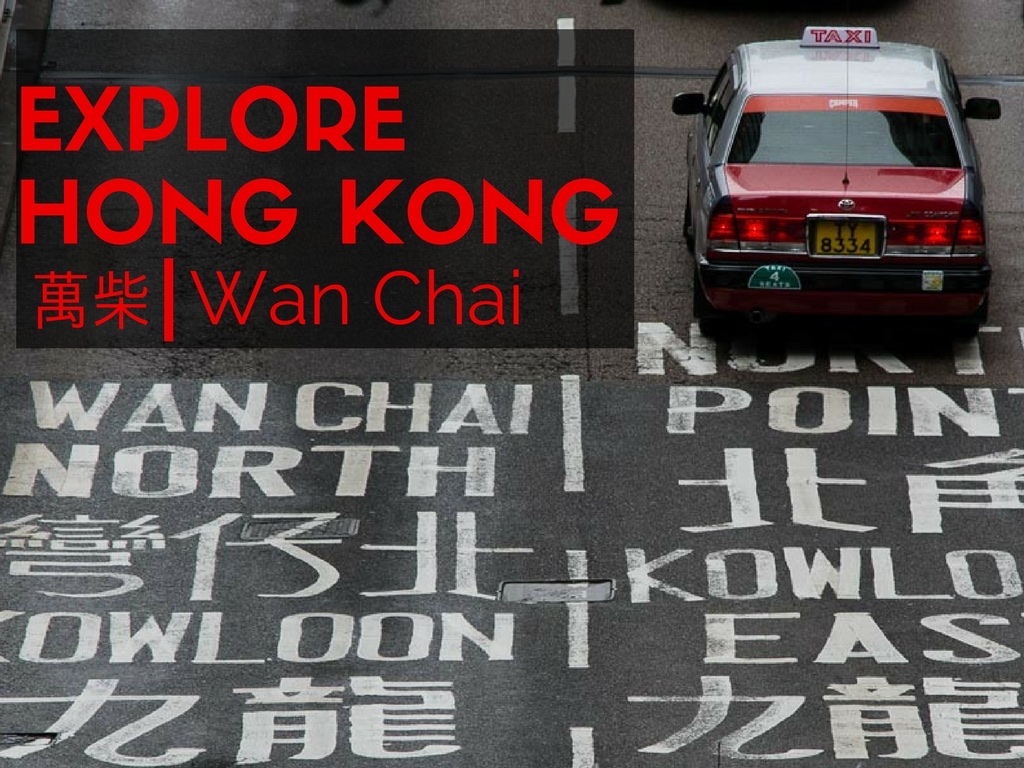
Wan Chai is one of those areas that pulls you in. It has a reputation far and wide as the red light district of Hong Kong and the area to go for those looking for a good time.
For the first time visitor it can be overwhelming. In fact for me it still is sometimes! In the midst of the hustle and bustle you’ll find hipster neighbourhoods, historic temples and some true Hong Kong gems.
If you’d only though of visiting Wan Chai after dark for a wild night of partying think again. Head out during the day and you will see a completely different side to this busy neighbourhood.
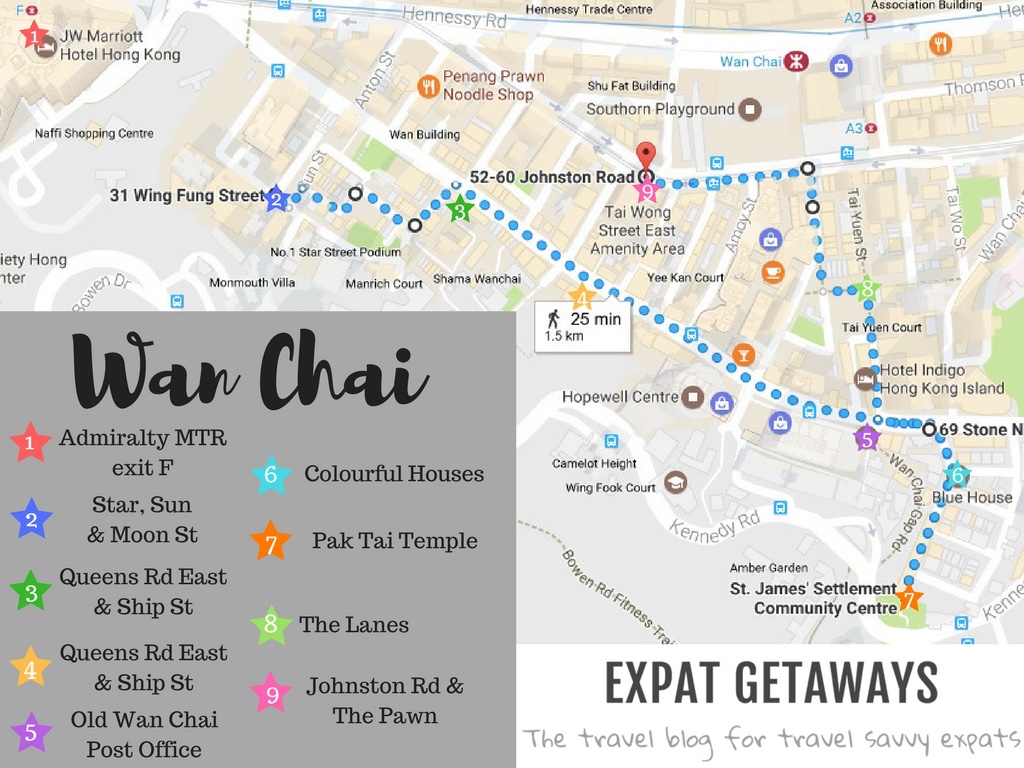
Distance: 1.5 kilometres
Time: 1.5-2 hours
1. Starting Point – Admiralty MTR Exit F
Take Exit F towards Pacific Place, before you reach the shopping centre turn left and follow the undercover walkway to 3 Pacific Place. Take the escalators up and exit onto Star Street.
2. Star, Sun and Moon Street
This little maze is the latest up and coming pocket of Hong Kong. Star, Sun and Moon along with St Francis Yard are a little melting pot of low-rise walk up buildings, cafes, restaurants, wine bars and boutique shops. A great local alternative to the gaudy neon lit bars of Lockhart Road or cliché of Soho.
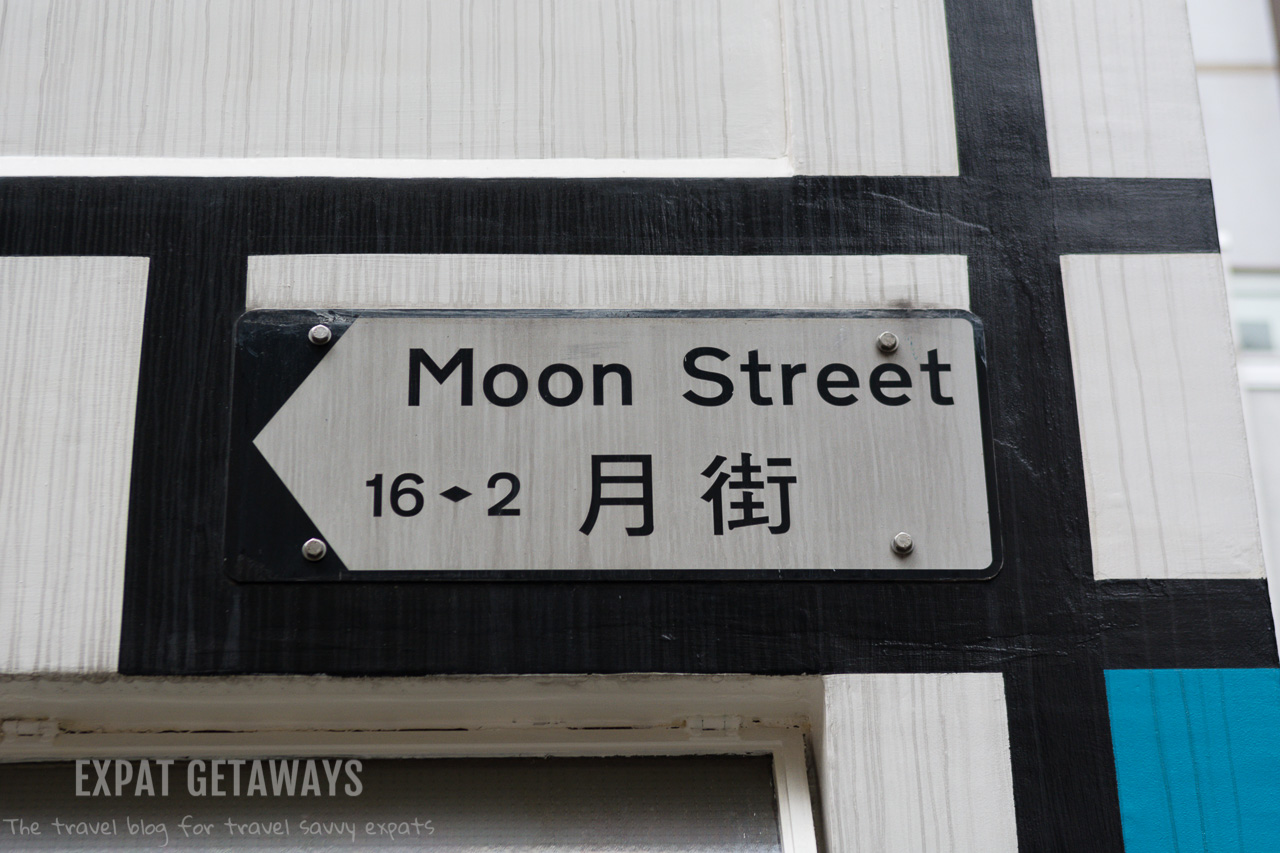
Like so often is the case in Hong Kong this area has a great little story to it. In 1841 this was the first burial ground in the early colony before it was replaced by Happy Valley Cemetery.
By 1889 big changes were happening in the colony. England controlled not only Hong Kong Island, but also Kowloon. The Star Ferry and Peak Tram were both up and running, the population was growing and business was booming. The next step, electricity!
The challenge for the newly established Hong Kong Electric Company was that they could only supply power within a one-mile radius surrounding the plant. They needed a central location which would cover government offices, big businesses and of course the homes of the wealthy elite. The old cemetery was the perfect place!
Once up and running Hong Kong became the second city in all of Asia to boast this modern wonder.
Why the name Sun, Star and Moon? The company decided to boost moral after difficulties at the plant by providing workers with accommodation. These were the first homes to be connected to the grid! The streets had to have appropriate name to reflect this status. A classic Chinese three character text reads:
The Three Forces
Are heaven, earth and man
The three luminaries
Are the sun, moon and stars.
HK Electric therefore was providing the light and therefore the luminary.
Follow St Francis Street down the hill and turn right onto Queen’s Road East.
3. Queens Road East and Ship Street
All sections of Queens Road mark the old waterfront of Hong Kong. You’ll notice that the area closest to the water is flat and everything south of the road heads straight up the hill of the original island. In Wan Chai this is a reminder of the huge scale of land reclamation in the city.
During the 19th Century Queens Road East was the place to come for furniture. The legacy can still be seen today along with picture framers and general home wares.
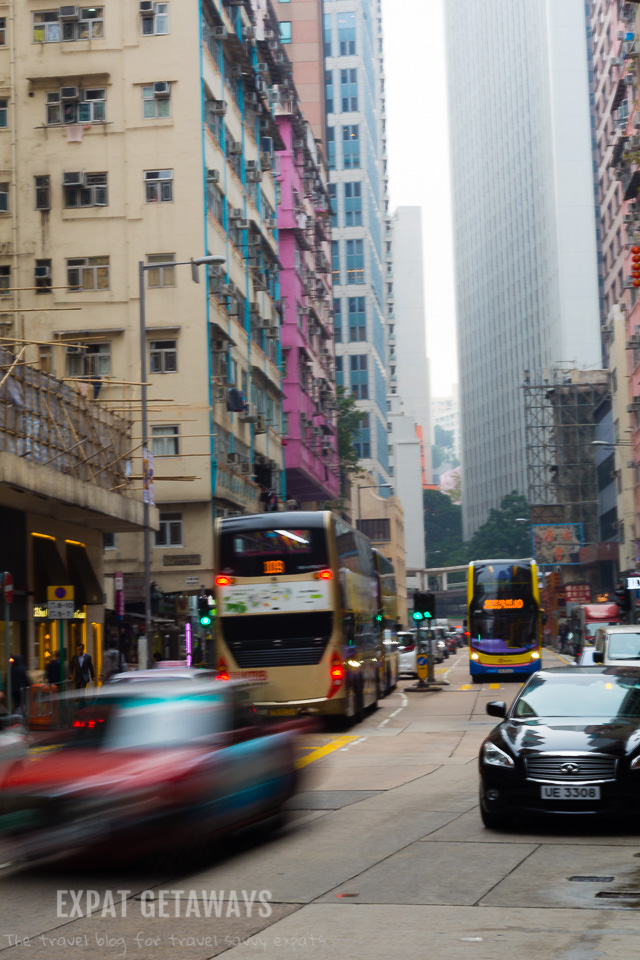
Across the road you’ll see the intersection of Ship Street. Like many areas the name tells a story… this is the old Ship yards of Hong Kong. What did sailors who’d been at sea for months on end do when they came ashore? Go looking for mischief.
That’s how at the beginning of the 20th Century Wan Chai started to get a reputation as a red light district. Brothels lined Ship Street and were easily recognised by the big street number displayed out the front.
Wan Chai’s reputation as a red light district continued in the lead up to WWII and then picked up again during the Vietnam War when huge numbers of soldiers on R & R took to the streets.
Continue east on Queen’s Road until you reach the Hung Shing Temple. It will be on your right.
4. Hung Shing Temple
If you could go back to the early colony you would have been standing on the waterfront, looking at sampans milling nearby in the harbour. They liked to be close by to easily visit the Hung Shing Temple or Tai Wong Temple as Hung Shing provides protection to those at sea.
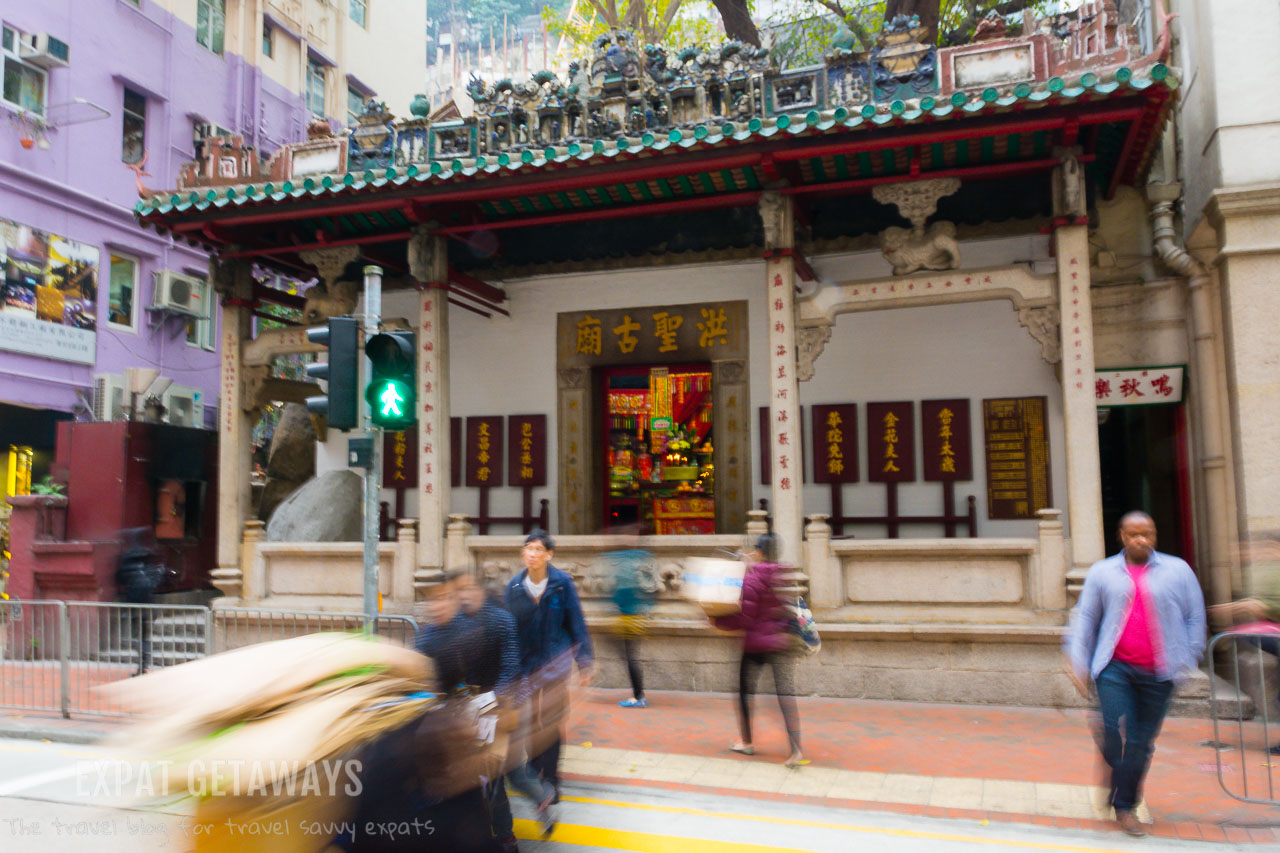
There has probably been a shrine of some sorts here for hundreds of years, but the physical temple was built on the waterfront into the side of the boulders around 1847. Of course now it is almost a kilometre from the harbour.
Continue east on Queen’s Road East until you reach the Old Post Office. It is on the junction of Wan Chai Gap Road, opposite McGregor Street on the right.
5. Old Wan Chai Post Office
The old Post Office opened in 1915 and operated for 77 years until 1992. It’s now a declared historical monument (which says something about Hong Kong’s sense of nostalgia when it comes to our heritage) and is home to the Environmental Resource Centre.
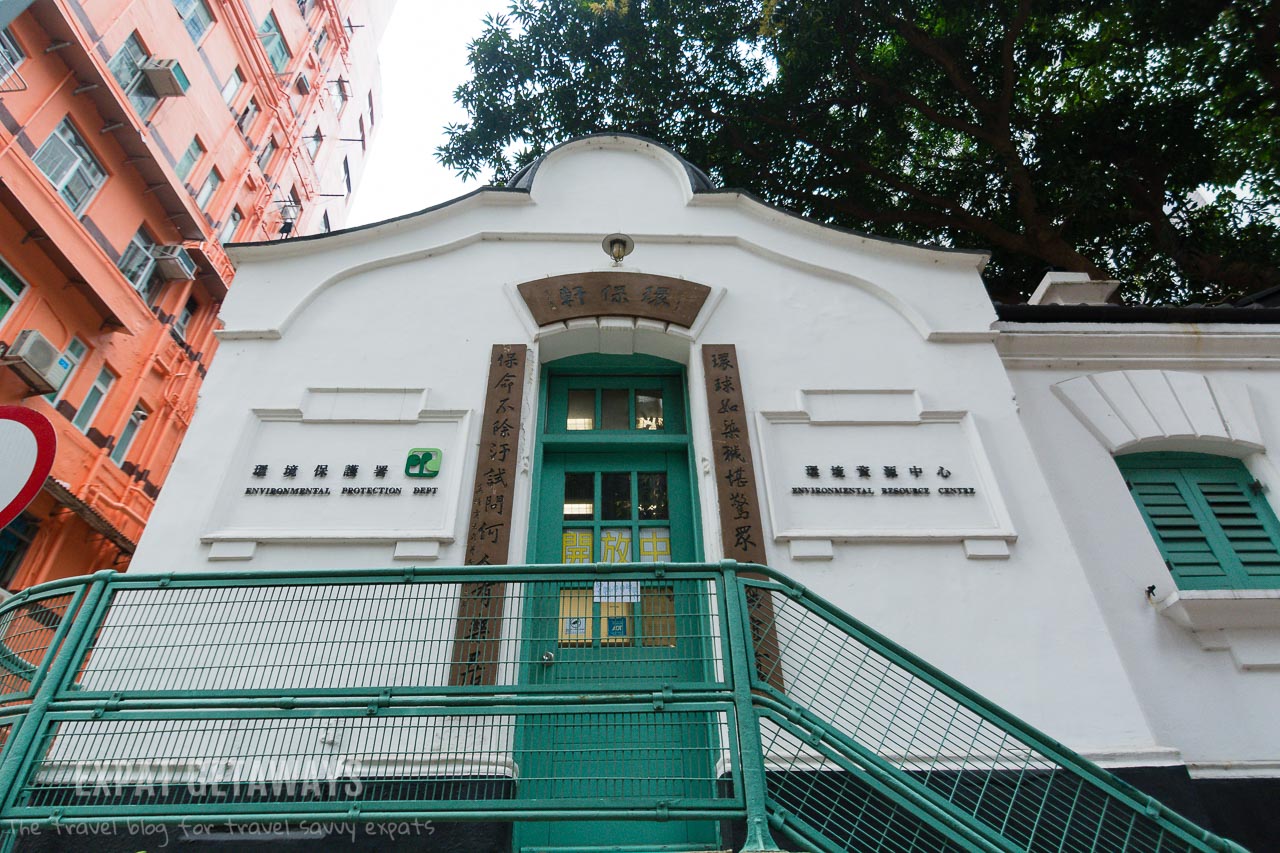
Continue along Queen’s Road East to Stone Nullah Lane.
6. Colourful Tenement Houses
On the corner of Stone Nullah Lane and Queens Road East you’ll come across a row of brightly coloured four story apartments from the 1920s. They’re quite unique in Hong Kong for their mix of Chinese and Western architecture and of course their striking colours.
The most famous is the Blue House. Have a guess what colour that one is! On construction the buildings were painted in whatever colour was available, in this case blue. Next door is the slightly taller Yellow House and nearby are the orange and green houses.
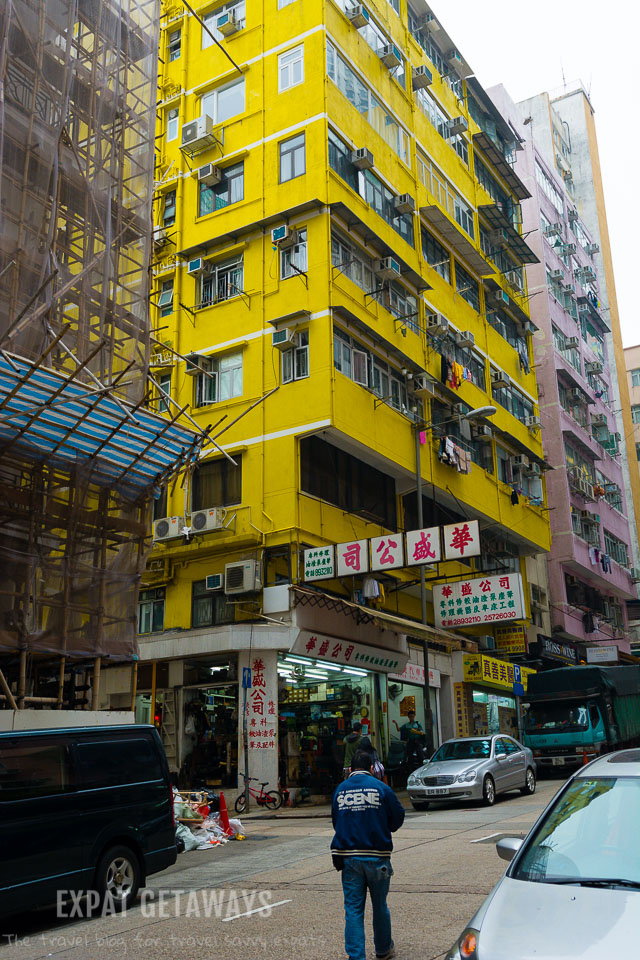
In 2016 it was announced that the NGO St James Settlement is revamping the buildings and going to offer them up for rent. The catch, you have to apply and they are looking for people who will contribute to the community feel of the neighbourhood and who will contribute to the conserving the area’s heritage. There will also be a House of Stories to conserve and show the history of the building and it’s former residents.
7. Pak Tai Temple
Pak Tai is worshiped for his power, courage and devotion and also known as the God of the North. He defeated the Demon King and his tortoise and serpent over 3,000 years ago. Pak Tai shows that righteousness will always win over evil and he’ll often appear clad in golden armour, barefoot and stepping triumphantly on a tortoise and serpent.
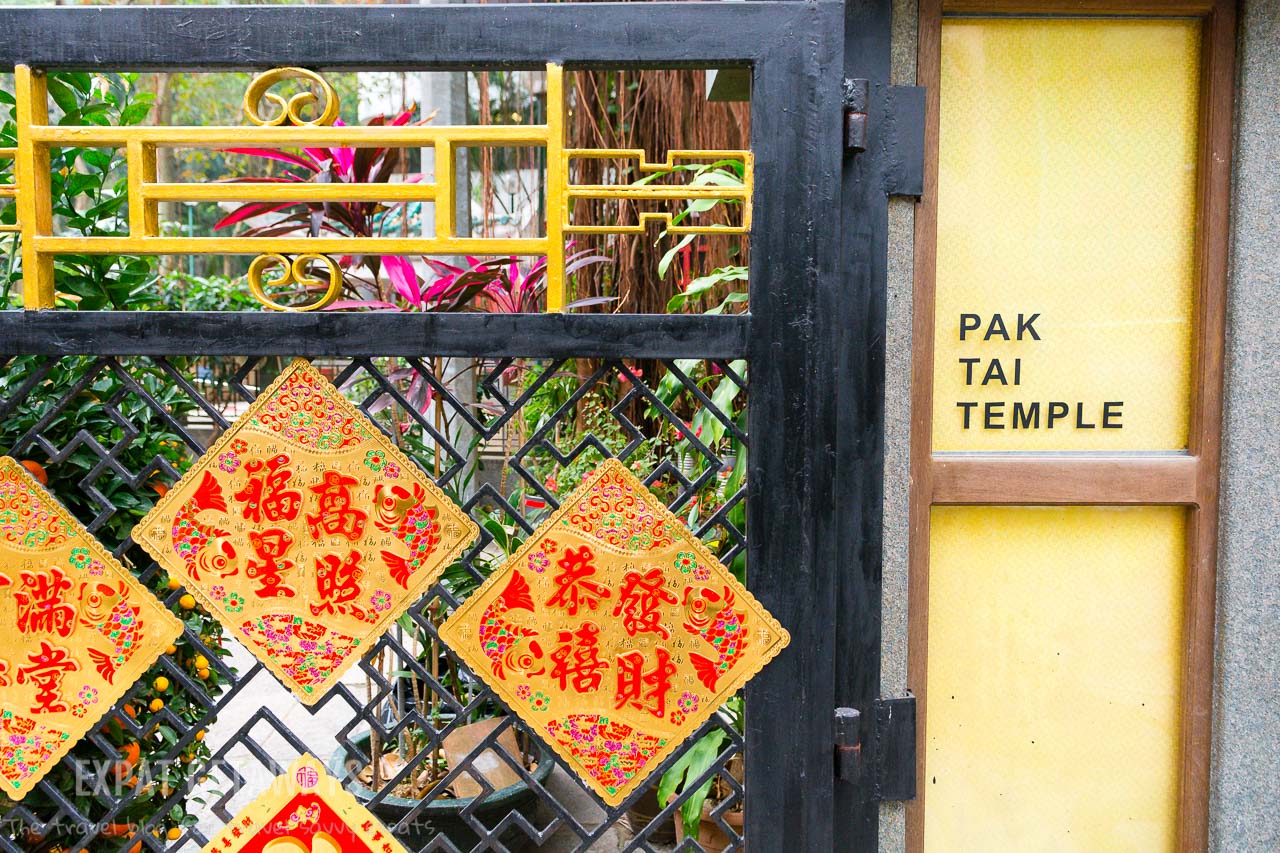
This Pak Tai temple was built in the 1860s and is the biggest on Hong Kong Island. It is really popular for funeral rites and so you will see paper offerings being incinerated.
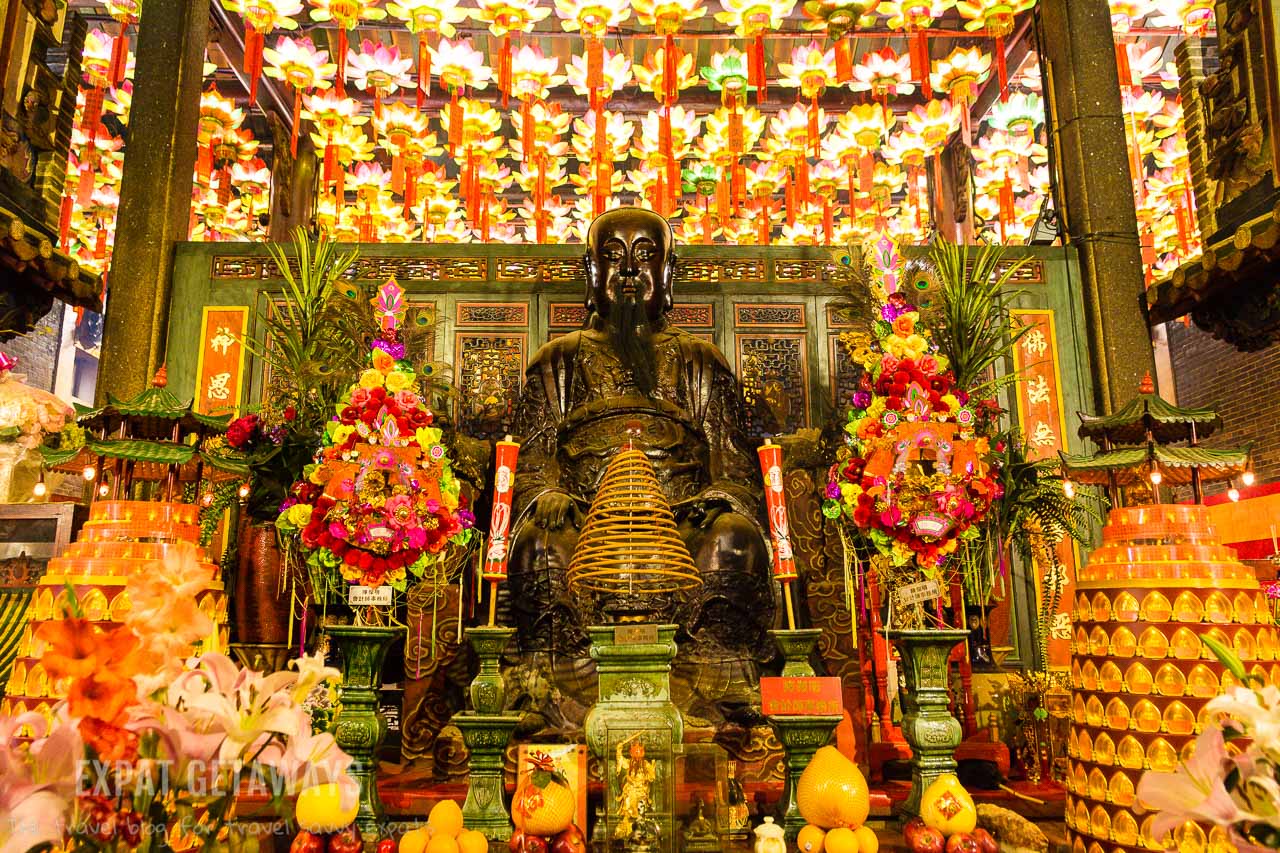
Retrace your steps to Queens Road East, cross the road and turn right onto Tai Yuen Street, follow the lanes to turn left onto Cross Street then right onto Spring Garden Lane
8. The Lanes
Spring Garden Lane was home to the wharves of all the major international trading houses of the 1840s and 1850s. Now this area is affectionately known as the Wan Chai Lanes, where you can come and shop for just about anything!
You can find gai see or street markets all over Hong Kong. Some of the more famous ones are the Ladies Market and Temple Street Night Market. Here in Wan Chai they have more of ramshackle mix reflective of the mixed urban landscape. There are shops selling Malay and Thai spices as well as Filipino branded goods to cater to huge number of foreign domestic helpers working in the city. There are clothing shops for the not so fashion conscious and a whole street full of toys for young and old.
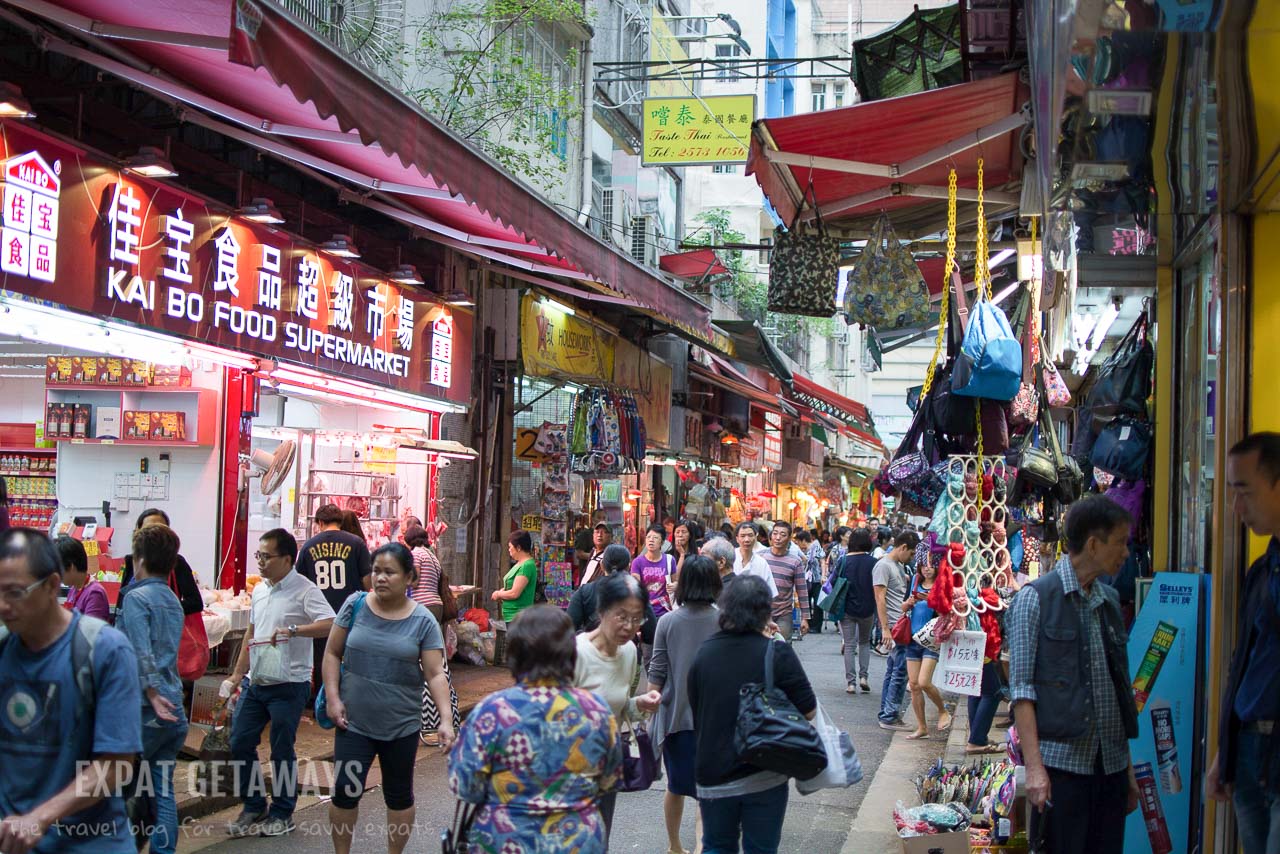
Turn Left onto Johnston Road.
9. Johnston Road and The Pawn
Until the 1920s Johnston Road was the waterfront of Hong Kong and you’ll see the trams or “ding dings” that have been running back and forth since 1904 and are the perfect way to get around.
Now Johnston Road is a busy road in the middle of the hustle and bustle with a soundtrack of jackhammers and construction.
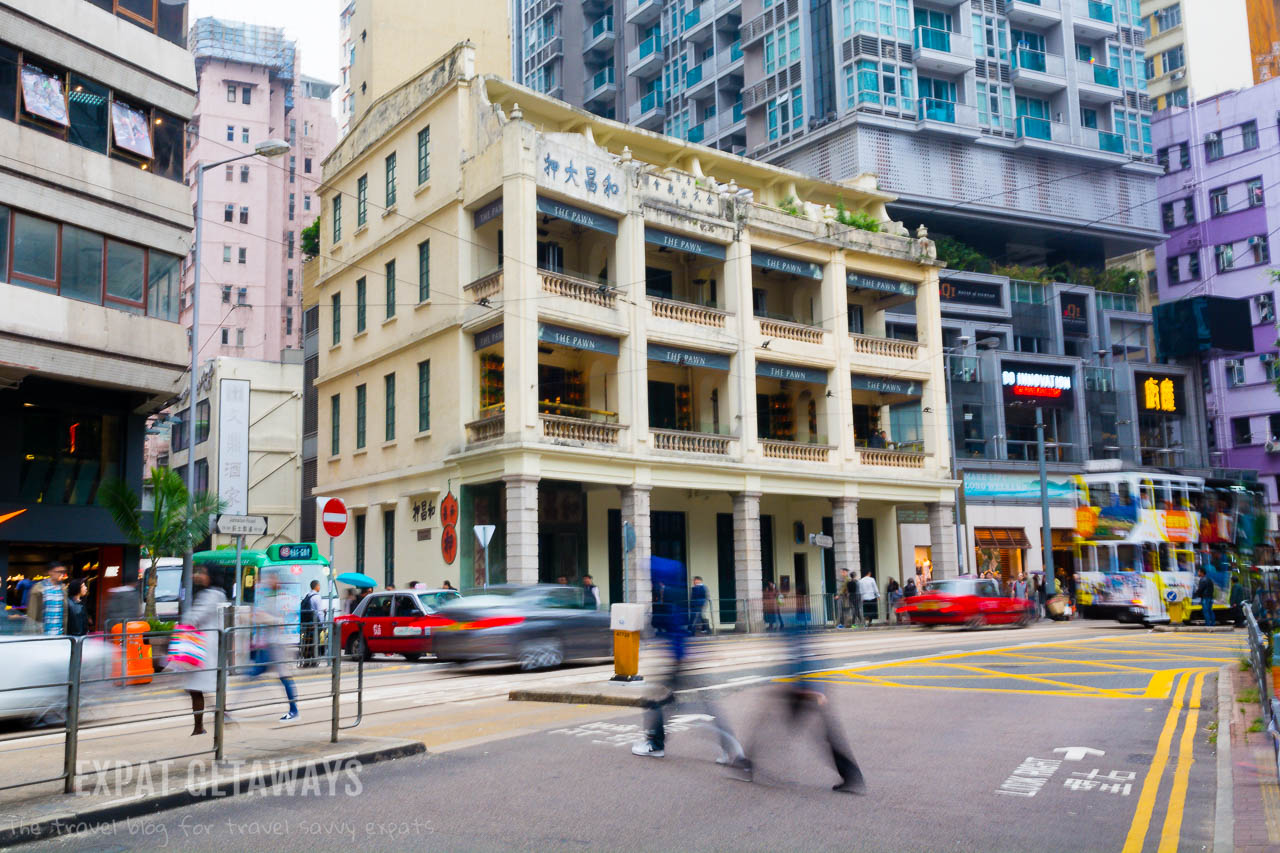
One relic has survived, The Pawn- formerly home to the Woo Cheong Pawnshop. It’s not often that the Urban Renewal Authority gets it right, but this is a great example of a 1920s shop front with the big wide awnings to keep the tropical heat at bay. A tiny glimpse into what Hong Kong must have looked like in all it’s colonial glory.
Want to get off the beaten path in Hong Kong? Check out our other Hong Kong posts or book a tour with Jess.
Photographs
Almost all photography is courtesy of my lovely husband over at Andrew Mizzi Photography. Be sure to check out his website for info on his camera kit, to purchase prints and of course more stunning photographs from this trip and our travels around the world.
Love it? Pin it!
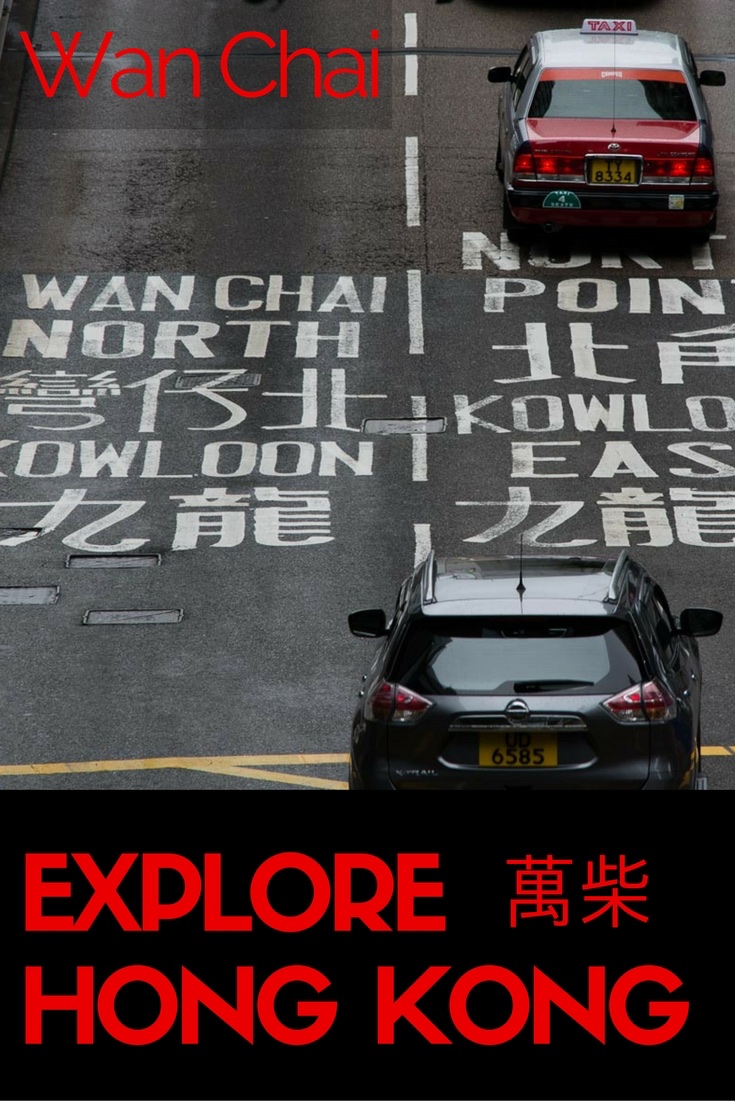
References
People always ask how I know all these random facts. The answer is a lot of research. I’ve picked up a fair bit of the history along the way from documentaries, museums (have you visited the Hong Kong History Museum? It’s amazing!) and books.
For this article I picked up some extra information from:
Stories Behind Hong Kong Street Names: Sun, Star and Moon Street, Wan Chai
Streets: Exploring Hong Kong Island by Jason Wordie
